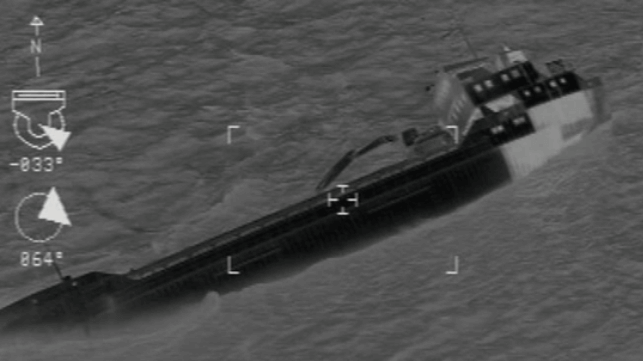Cargo Liquefaction Remains the Most Dangerous Hazard for Bulkers

Cargo liquefaction remains the single biggest risk for loss of life in the bulk carrier trade, according to a new long term casualty report from Intercargo.
The long-term rolling report covers vessel losses from 2013-22. During the period, 26 seagoing bulkers went down, costing 104 lives and millions of dollars in lost property. While all of these incidents are unfortunate, Intercargo notes that the rate of casualties per year has been in decline and that safety performance has improved over the last 10 years - especially considering the growth in the size of the bulker fleet over the same period.
Five of the casualties and the overwhelming majority of the fatalities (70 out of 104) were caused when ships capsized due to cargo liquefaction, a particularly dangerous condition for some dry bulk materials.
Liquefaction is caused by the material properties of certain ores and minerals. When the moisture level in these cargoes is too high - above the transportable moisture limit (TML) - the material can shift to one side of the hold when the ship rolls. This quickly worsens because the wet ore may stay put on one side when the ship rolls back. After a few rounds of this cargo shift pattern, the ship can capsize rapidly, sometimes so quickly that the crew can't abandon ship.
This risk is well-recognized for cargoes in the "Group A" category of the International Maritime Solid Bulk Cargoes (IMSBC) Code - particularly nickel ore, which is prone to liquefaction and often stored outdoors in wet conditions at the port of loading. As might be expected, wet nickel ore accounted for four out of the five fatal liquefaction events of the last decade. Bauxite - another well-known high risk cargo - accounted for the fifth.
Intercargo noted that the risk is unpredictable. Liquefaction's effects can accumulate slowly over the course of a voyage, or can happen suddenly, without any warning for the crew. One cautionary tale is the loss of the bulker Nur Allya, which disappeared suddenly off Buru Island, Maluku in August 2019. All 27 crewmembers went down with the ship, and it took two months to find the vessel on the seabed and confirm their fate.
The only sure prevention is to keep excessively wet bulk cargoes off the ship. Even cargoes outside of Group A - like dirt or calcium carbonate - can still cause liquefaction casualties if they exceed the TML, according to Gard.
The most common cause of bulker losses was grounding, accounting for nearly half of the total. It was also tied for least fatal, accounting for zero loss of life. While posing less risk for the crew, groundings can be among the most environmentally damaging casualties, as the vessel's fuel may be released close in to coastal communities. The grounding and breakup of the bulker Wakashio off Mauritius in 2020 was the most publicized bulker loss in years - and among the most costly, as spilled bunker fuel contaminated a well-known and environmentally sensitive coral lagoon.
